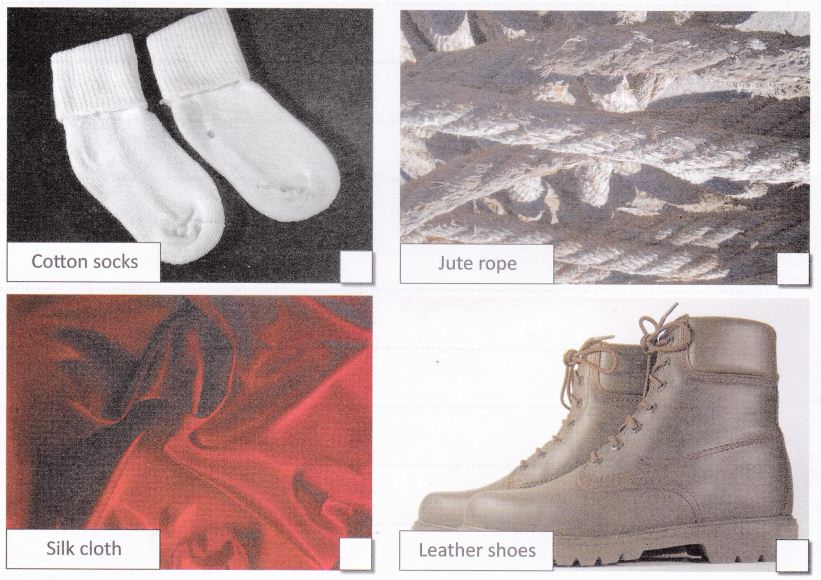- Books Name
- CBSE Class 6 Science Book
- Publication
- Param Publication
- Course
- CBSE Class 6
- Subject
- Science
HISTORY OF CLOTHING MATERIAL
In ancient times people used the bark and big leaves of trees or animal skins and furs to cover themselves.
After people began to settle in agricultural communities, they learnt to weave twigs and grass into mats and baskets. Vines, animal fleece or hair were twisted together into long strands. These were woven into fabrics. The early Indians wore fabrics made out of cotton that grew in the regions near the river Ganga. Flax is also a plant that gives natural fibres. In ancient Egypt, cotton as well as flax were cultivated near the river Nile and were used for making fabrics.
In those days, stitching was not known. People simply draped the fabrics around different parts of their body. Many different ways of draping fabrics were used. With the invention of the sewing needle, people started stitching fabrics to make clothes. Stitched clothes have gone through many variations since this invention. But, it is also amazing that even today saree, dhoti, lungi or turban is used as an un-stitched piece of fabric.
Just as there is a large variety in the food eaten all over our country, a large variety exists also in fabrics and clothing items.
- Books Name
- Class 6 Science Book
- Publication
- PathSet Publications
- Course
- CBSE Class 6
- Subject
- Science
VARIETY IN FABRICS
Clothes are made of different materials. We get these materials from both plants and animals.

Fiber And Fabric:
Clothes are made mostly from fibres. Fibres are thin strands of thread, that are woven to make fabric, for example, cotton fabric, silk fabric, etc. The fabric is stitched to make clothes. For example, cotton fabric can be stitched into a cotton frock or a cotton kurta.
Yarn: Yarn is defined as a long, twisted and continuous strand composed of interlocked fibers or filaments which are used in knitting and weaving to form cloth.

 Param Publication
Param Publication
 PathSet Publications
PathSet Publications
